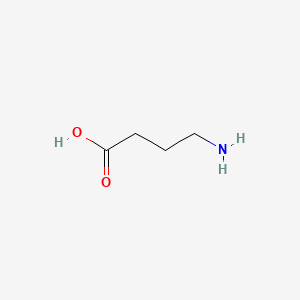| MeSH term | MeSH ID | Detail |
|---|---|---|
| Gangliosidosis, GM1 | D016537 | 1 associated lipids |
| Serotonin Syndrome | D020230 | 1 associated lipids |
| Athetosis | D001264 | 1 associated lipids |
| Syringomyelia | D013595 | 1 associated lipids |
| Arachnoid Cysts | D016080 | 1 associated lipids |
| Torticollis | D014103 | 1 associated lipids |
| Meige Syndrome | D008538 | 1 associated lipids |
| Carcinoma, Acinar Cell | D018267 | 1 associated lipids |
| Meningitis, Viral | D008587 | 1 associated lipids |
| alpha-Mannosidosis | D008363 | 1 associated lipids |
| Hiccup | D006606 | 1 associated lipids |
| Chorea | D002819 | 1 associated lipids |
| Congenital Disorders of Glycosylation | D018981 | 1 associated lipids |
| Tongue, Fissured | D014063 | 1 associated lipids |
| Neuroectodermal Tumors, Primitive | D018242 | 1 associated lipids |
| Muscle Hypertonia | D009122 | 1 associated lipids |
| Causalgia | D002422 | 1 associated lipids |
| Polyradiculopathy | D011128 | 1 associated lipids |
| Iatrogenic Disease | D007049 | 1 associated lipids |
| Vision, Low | D015354 | 1 associated lipids |
4-aminobutyric acid
4-aminobutyric acid is a lipid of Fatty Acyls (FA) class. 4-aminobutyric acid is associated with abnormalities such as Epilepsy and Premenstrual syndrome. The involved functions are known as Binding (Molecular Function), neuron survival, Process, Uptake and physiological aspects. 4-aminobutyric acid often locates in Microglial, Neurofilament, Neuraxis, Brain region and Neurites. The associated genes with 4-aminobutyric acid are arginine methyl ester, SLC33A1 gene, NKS1 gene, P4HTM gene and ITSN2 gene. The related lipids are pregnenolone sulfate, pregnane-20-one, Pregnanes, Steroids and endogenous steroids.
Cross Reference
Introduction
To understand associated biological information of 4-aminobutyric acid, we collected biological information of abnormalities, associated pathways, cellular/molecular locations, biological functions, related genes/proteins, lipids and common seen animal/experimental models with organized paragraphs from literatures.
What diseases are associated with 4-aminobutyric acid?
4-aminobutyric acid is suspected in Premenstrual syndrome, Epilepsy and other diseases in descending order of the highest number of associated sentences.
Related references are mostly published in these journals:
| Disease | Cross reference | Weighted score | Related literature |
|---|
Possible diseases from mapped MeSH terms on references
We collected disease MeSH terms mapped to the references associated with 4-aminobutyric acid
PubChem Associated disorders and diseases
What pathways are associated with 4-aminobutyric acid
There are no associated biomedical information in the current reference collection.
PubChem Biomolecular Interactions and Pathways
Link to PubChem Biomolecular Interactions and PathwaysWhat cellular locations are associated with 4-aminobutyric acid?
Visualization in cellular structure
Associated locations are in red color. Not associated locations are in black.
Related references are published most in these journals:
| Location | Cross reference | Weighted score | Related literatures |
|---|
What functions are associated with 4-aminobutyric acid?
Related references are published most in these journals:
| Function | Cross reference | Weighted score | Related literatures |
|---|
What lipids are associated with 4-aminobutyric acid?
Related references are published most in these journals:
| Lipid concept | Cross reference | Weighted score | Related literatures |
|---|
What genes are associated with 4-aminobutyric acid?
Related references are published most in these journals:
| Gene | Cross reference | Weighted score | Related literatures |
|---|
What common seen animal models are associated with 4-aminobutyric acid?
There are no associated biomedical information in the current reference collection.
NCBI Entrez Crosslinks
All references with 4-aminobutyric acid
Download all related citations| Authors | Title | Published | Journal | PubMed Link |
|---|---|---|---|---|
| Göthert M et al. | Inhibition of catecholamine release from the adrenal medulla by halothane. Site and mechanism of action. | 1976 | Naunyn Schmiedebergs Arch. Pharmacol. | pmid:1004635 |
| Zsilla G et al. | Regional changes in the rate of turnover of acetylcholine in rat brain following diazepam or muscimol. | 1976 | Naunyn Schmiedebergs Arch. Pharmacol. | pmid:1004636 |
| Thomas A et al. | The effects of progesterone on oxytocin mRNA levels in the paraventricular nucleus of the female rat can be altered by the administration of diazepam or RU486. | 1999 | J. Neuroendocrinol. | pmid:10048469 |
| Hirota K et al. | GABAergic mechanisms in the action of general anesthetics. | 1998 | Toxicol. Lett. | pmid:10049143 |
| Ikemoto Y et al. | Volatile anesthetics and a volatile convulsant differentially affect GABA(A) receptor-chloride channel complex. | 1998 | Toxicol. Lett. | pmid:10049146 |
| Thompson SA et al. | Functional characteristics of recombinant human GABA(A) receptors containing the epsilon-subunit. | 1998 | Toxicol. Lett. | pmid:10049148 |
| Crump FT et al. | Localization of the brain-specific high-affinity l-proline transporter in cultured hippocampal neurons: molecular heterogeneity of synaptic terminals. | 1999 | Mol. Cell. Neurosci. | pmid:10049529 |
| DeToledo JC et al. | Skin eruption with gabapentin in a patient with repeated AED-induced Stevens-Johnson's syndrome. | 1999 | Ther Drug Monit | pmid:10051068 |
| Zeng XJ and Tietz EI | Benzodiazepine tolerance at GABAergic synapses on hippocampal CA1 pyramidal cells. | 1999 | Synapse | pmid:10051107 |
| Katona I et al. | Postsynaptic targets of somatostatin-immunoreactive interneurons in the rat hippocampus. | 1999 | Neuroscience | pmid:10051188 |
